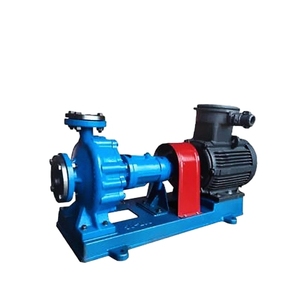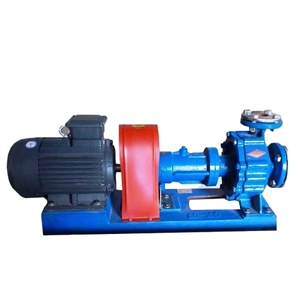(11870 products available)













































































































































































350 oil pump is a fundamental part of many vehicles. Its essential work is to make sure that oil circulates well through the engine. That helps with lubrication, preventing wear and tear, and keeping the engine cool, which boosts its performance. There are different kinds of 350 oil pumps for various applications depending on the CFM rating, which stands for cubic feet per minute.
The following are the specifications that one should consider when purchasing a 350 oil pump:
Oil Pump Drive:
It is responsible for driving the oil pump. The oil pump drive can be a chain, belt, or shaft drive.
Oil Pump Housing:
It is the external structure that encloses the oil pump. The housing is made of materials like aluminum, cast iron, or steel.
Oil Viscosity:
It is a measure of the thickness of the oil. High-viscosity oils are thicker and flow slowly, while low-viscosity oils are thinner and flow quickly. Common oil viscosity ratings are 5W-30, 10W-40, and 15W-50.
Oil Pump Pressure:
This is the force with which the oil is pumped through the engine. Higher pressure ensures better lubrication and protection against wear and tear. The oil pump pressure is measured in pounds per square inch (PSI) and can range from 25 to 75 PSI.
Flow Rate:
The amount of oil pumped per minute is called the oil pump flow rate. It is measured in liters per minute (LPM) or gallons per minute (GPM). A typical flow rate for a 350 small block oil pump is 3.5 LPM (0.9 GPM).
Maintaining a 350 oil pump is important because it increases its lifespan and reliability. Here are the maintenance tips:
Oil Changes:
Regular oil changes keep the oil clean and free from contaminants. This helps the oil pump last longer. It is advisable to change the oil every 5,000 miles or after 6 months.
Oil Level Checks:
The oil level should be checked frequently. Low oil levels can cause the oil pump to run dry, leading to pump damage. The oil level should be checked before long trips or after heavy engine usage.
Oil Additives:
Oil additives can be used to improve the performance of the oil pump. The additives help to reduce friction, clean the oil passages, and enhance the oil's protective properties. They also increase the oil pump's efficiency and longevity.
Visual Inspections:
The oil pump and its components should be visually inspected for wear and tear. Signs of wear include cracks, leaks, and damaged parts. These signs should be checked before starting the engine or during routine maintenance.
Considering the numerous options available, here are some tips to help buy a suitable 350 oil pump for the business:
Understand Users' Needs
Firstly, get to know the target customers and the type of vehicles they use. Are they using a small car or a big truck? Different engines have different requirements. Get to know the viscosity grade of the oil recommended for their engines. It will help understand the type of oil pump 350 they will need.
Consider the Brand and Reputation
Look for a reputable and well-known brand. A good brand usually means quality. Don't forget to check reviews and ratings to see what other people are saying about the product. Go for a pump with good reviews.
Quality and Reliability
Quality and reliability are very important when it comes to 350 oil pumps. The pump needs to be made with high-quality materials that can last a long time. Also, it should be strong enough to handle heavy-duty work without breaking down. A reliable oil pump will keep the engine well-lubricated, reducing friction and wear on its parts. This will prevent costly damages and ensure the pump runs smoothly for a long time.
Flow Rate and Pressure
The flow rate and pressure of the oil pump are very important for its performance. The pump needs to have a good flow rate to make sure the oil moves through the engine parts smoothly. Also, it should provide enough pressure to keep the oil at the right level in the engine. A well-balanced flow rate and pressure will keep the engine lubricated properly and protect it from damage.
Easy Installation and Maintenance
When choosing a 350 oil pump, consider how easy it is to install and take care of. Look for a pump that is simple to install without a lot of extra work. Also, check if it is easy to clean and take care of. An easily maintained oil pump will save time and money in the long run.
Price and Warranty
Consider the price of the oil pump. But don't just go for the cheapest one. It should be a good balance between price and quality. A reliable pump might cost a little more but will last longer. Also, see if the manufacturer offers a warranty. A good warranty shows that the company stands behind its product.
Replacing a 350 oil pump can be a DIY-friendly activity. Here are the steps to replace a 350 oil pump.
Find the right oil pump
Get the right replacement oil pump for the 350 engine. Ensure the new pump is compatible with the existing engine.
Get the right tools
Mechanics will need basic hand tools such as ratchets, sockets, and wrenches. They may also need torque wrenches, a gasket scraper, and an oil catch pan.
Prepare the work area
Park the vehicle in a well-ventilated area with ample lighting. Allow the engine to cool down before starting the oil pump replacement.
Disconnect the battery
For safety purposes, disconnect the battery before starting any work on the vehicle's engine.
Drain the engine oil
Put an oil catch pan under the oil pan and remove the oil drain plug. Allow sufficient time for all the oil to drain before removing the oil pump.
Remove the oil pump
Jack the vehicle up and put it on jack stands. Locate the oil pump, which is usually on the engine block. Disconnect the oil pump's electrical connections and remove the mounting bolts. Then, remove the oil pump from the engine.
Prepare the mounting surface
Once the old oil pump is removed, use a gasket scraper to clean the mounting surface on the engine block. Make sure there are no leftover gasket materials on the mounting surface.
Install the new oil pump
350 c.i.d. oil pump. Line up the oil pump with the mounting holes on the engine block and gently push it into place. Use a new gasket or sealant to ensure there are no oil leaks. Then, tighten the mounting bolts using the appropriate torque specifications.
Reconnect the oil lines
Connect the oil lines to the oil pump. Ensure all connections are tight to prevent oil leaks. Reconnect the oil pump's electrical connections.
Refill with new engine oil
Use a funnel to pour new engine oil into the engine through the oil filler cap. Refer to the owner's manual for the correct oil type and capacity. Reinstall the oil drain plug and start the engine. Allow it to run for a few minutes and check for any oil leaks around the pump.
Reconnect the battery
Reconnect the battery once everything is in place, and the oil pump is working.
Q1: What is a 350 oil pump?
A1: The 350 oil pump is a component of the small block Chevy (SBC) 350 engines. Its primary function is to ensure that the engine oil circulates throughout the engine to lubricate its components and protect them from wear and tear.
Q2: What are the benefits of the 350 oil pump?
A2: The 350 oil pump has several advantages. First, it ensures the engine is well lubricated, hence preventing the wear and tear of its components. As a result, the engine's efficiency and performance are optimized. It also helps to maintain the engine's performance by ensuring it runs smoothly.
Q3: How does a 350 oil pump work?
A3: The 350 oil pump draws in oil from the engine's oil pan and pumps it under pressure through the oil galleries to the engine's moving parts. These include the crankshaft, camshaft, and piston rods. The oil pumped to these parts lubricates them and reduces friction, ensuring they move smoothly and reducing wear and tear.
Q4: How often should the 350 oil pump be replaced?
A4: The lifespan of a 350 oil pump will depend on several factors, such as its condition and frequency of use. However, it will typically last between 40,000 to 60,000 miles. Therefore, it should be replaced after the given mileage to ensure the engine's optimal performance and efficiency.
Q5: What are the signs of a failing 350 oil pump?
A5: The 350 oil pump has several signs when it's failing. These include a drop in oil pressure, engine noise due to lack of lubrication, warning lights on the dashboard, and oil leaks. When users notice any of these signs, they should check the oil pump and replace it if necessary.